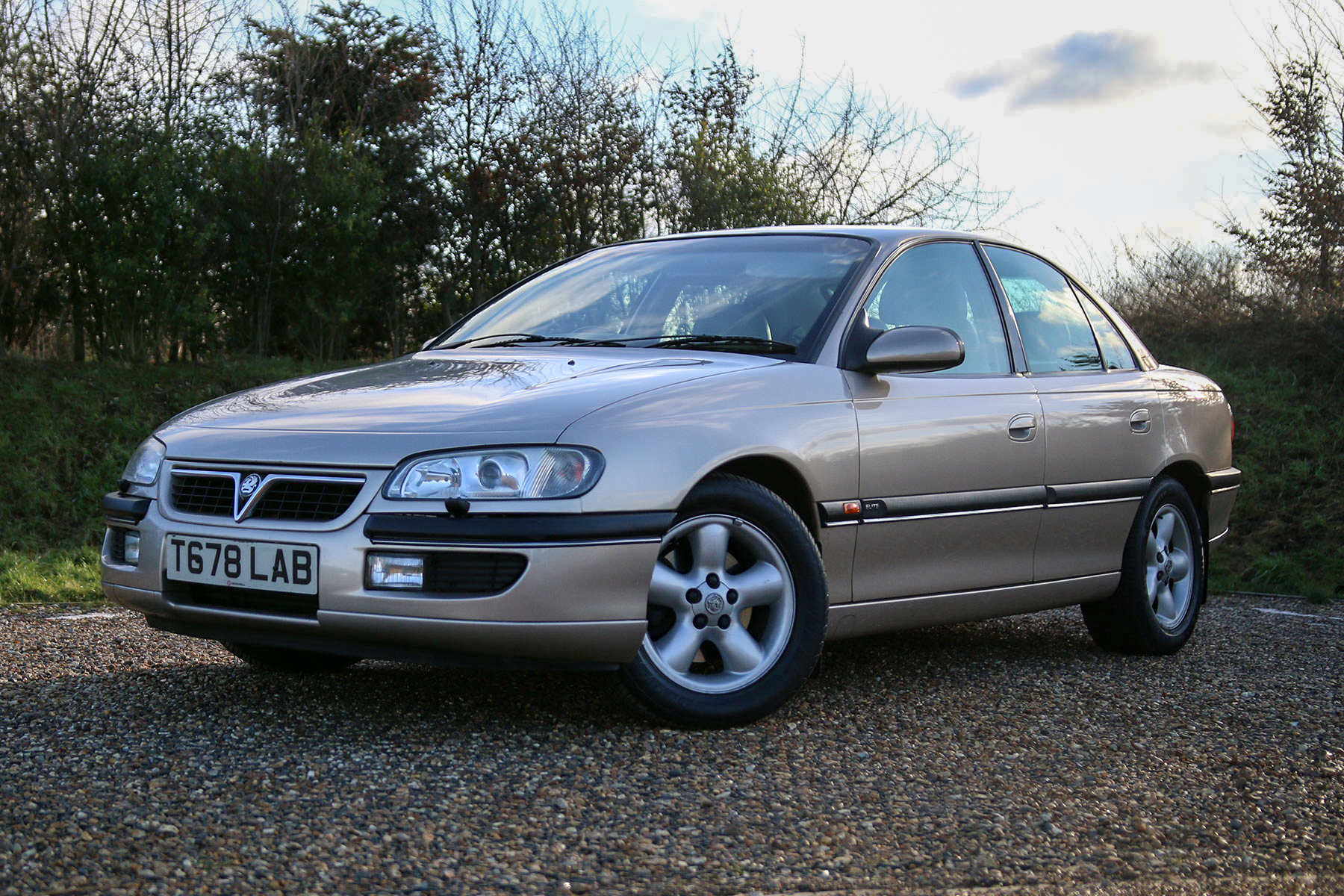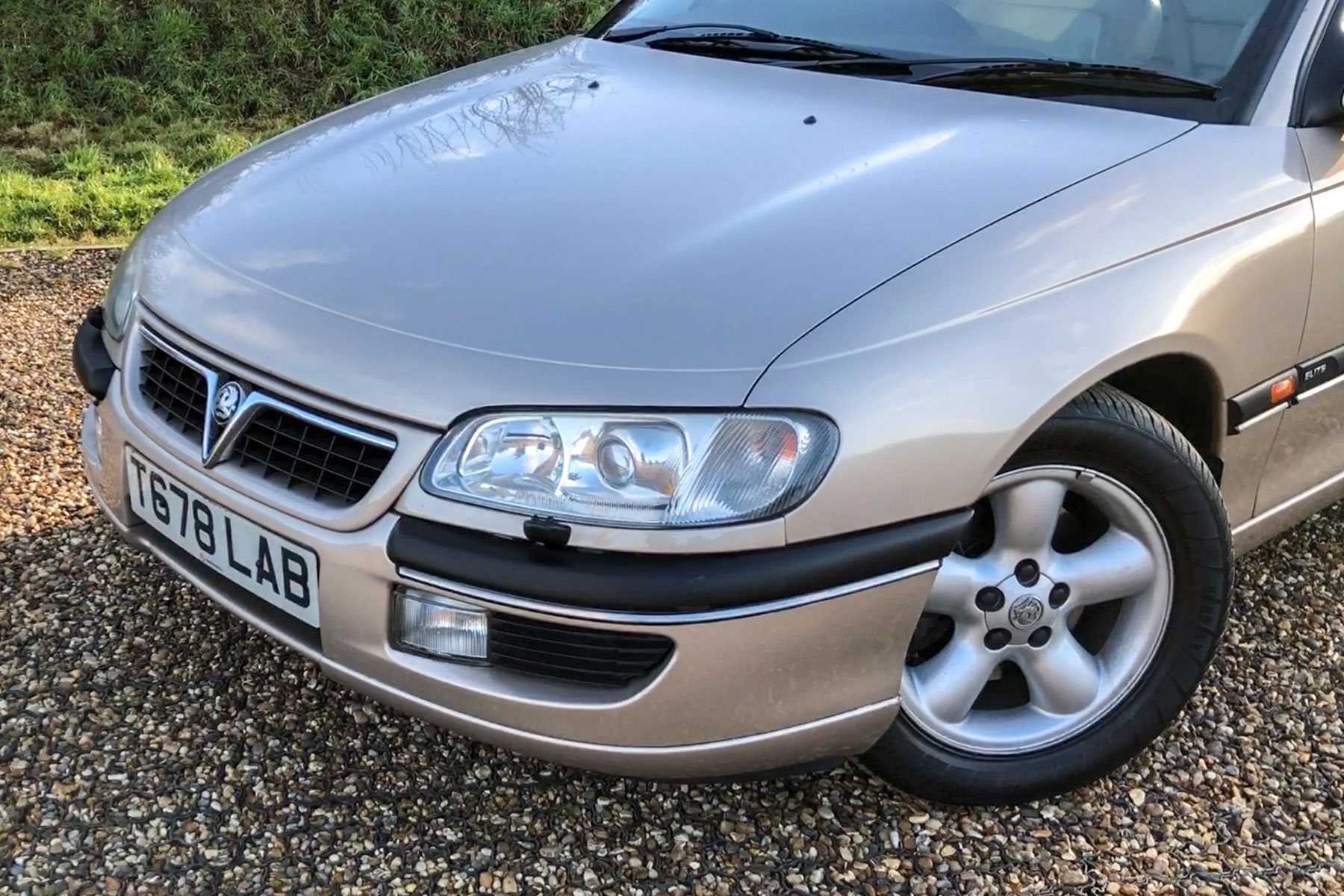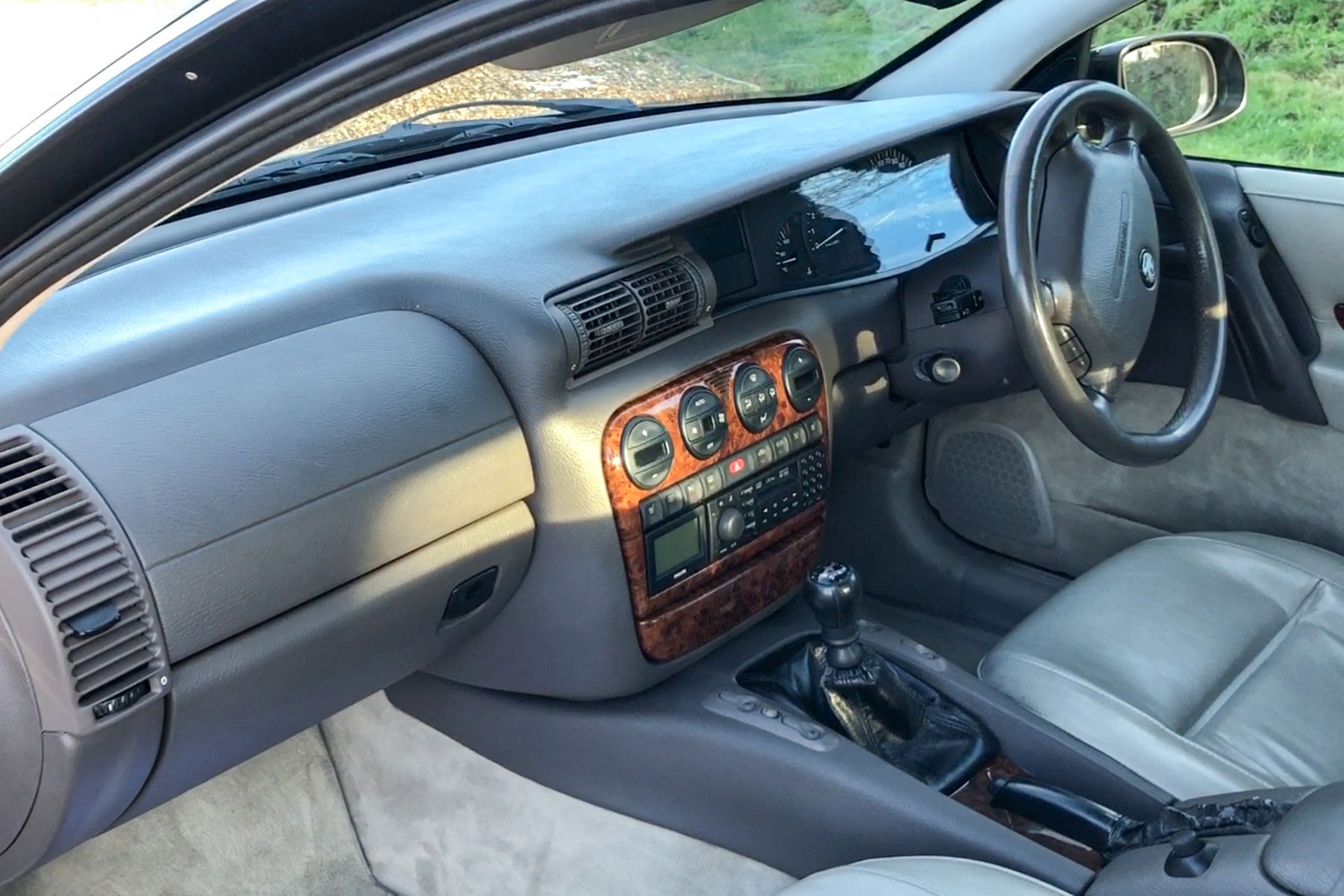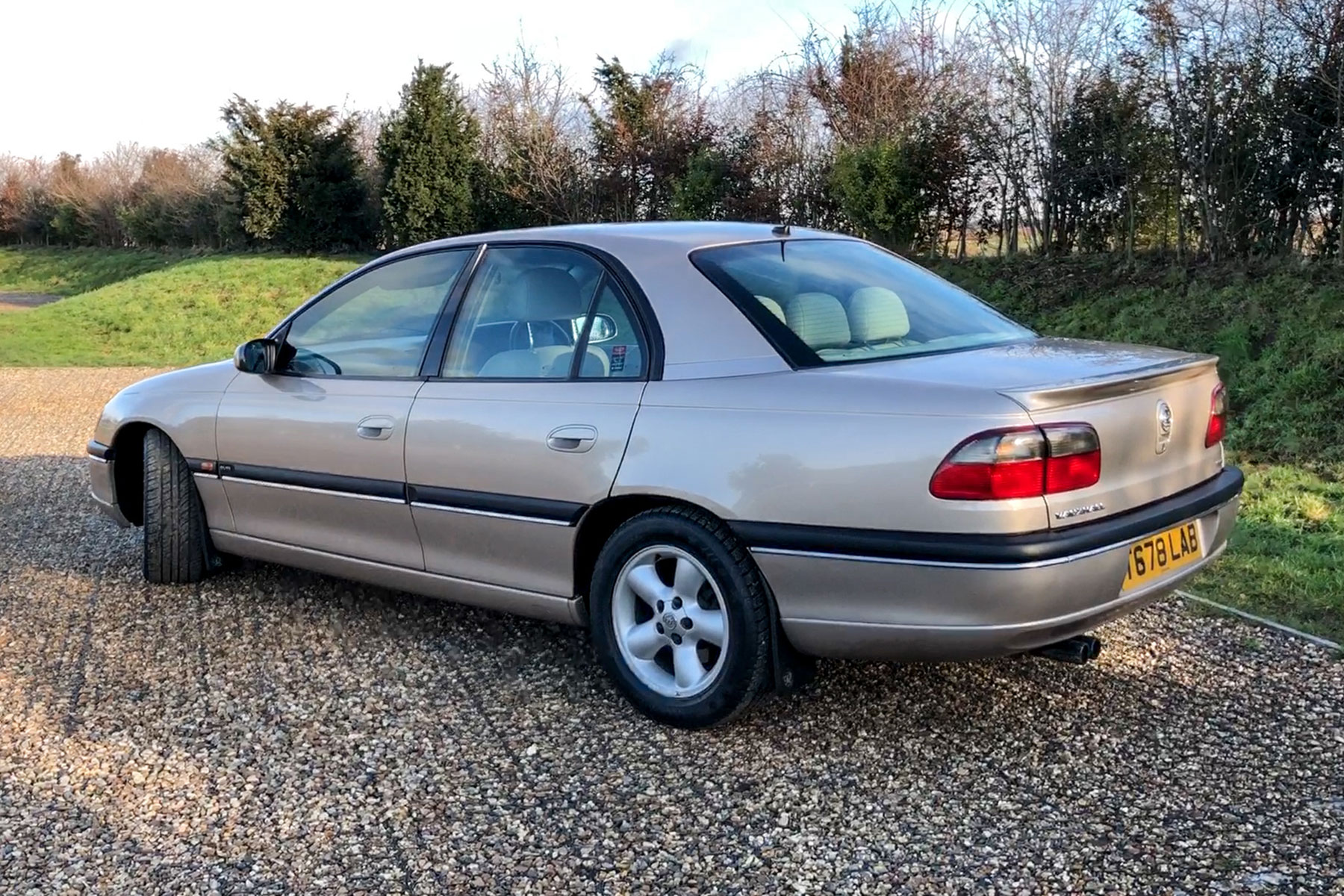
An old Omega awaits me in the car park of Vauxhall’s heritage centre. It’s a freezing day in Luton. The car looks beige in more ways than one: a dreary piece of 1990s wannabe luxo-barge. Depressing, ordinary, barely worth a second glance.
Still, I can’t wait to get in, just to get out of the bitter breeze and, if I’m honest, drive to the country pub where we (cameraman Bradley and I) are meeting colleagues for lunch.
Launched as a successor to both the Vauxhall Carlton and Senator in 1994, the Omega was like a cut-price BMW 5 Series. In fairness, it was very different to its ageing predecessors. It was all-new, right down to its extensive engine line-up, which ranged from a 116hp 2.0-litre four-cylinder to a 211hp 3.0-litre V6.
It stuck with a traditional rear-wheel-drive layout, but looked modern in its design – if not as desirable as its upmarket German competitors (and rather dated today).
We jump inside and breathe in the joyous smell of old leather, similar to BMWs of that era (anyone who’s driven a 1990s BMW with leather trim will know what I mean). Things start to look up as we find the buttons for the heated seats, then when the hum of a 3.0-litre V6 creeps into the cabin.
How does it drive?

At nearly 4.8 metres long and 1.8 metres wide, the Omega was a bulky car in its day. While it’s smaller than today’s premium cars, the difference might not be as great as you think. It’ll take a few moments to get accustomed if you’re used to compact cars.
Once I have negotiated the back streets of Luton, I quickly realise how much I’ve underestimated this Vauxhall. Bland it may look, but it isn’t bland to drive. Far from it.
For a start, the engine goes as well as it sounds. It’s a strange phenomenon, hurling forwards in an Antique Gold Omega at speeds that border on the anti-social, but it’s quick enough to make Bradley and I laugh at the absurdity. The five-speed manual transmission isn’t the obvious choice for this car – arguably it’d be better suited to an automatic – but an auto ‘box does blunt the performance of the V6.
This high-spec Omega is fitted with the optional traction control. Not having it wouldn’t be a huge worry, though; it’s a communicative chassis that tells you when you’re getting carried away. And besides, most people will be too relaxed driving a high-spec Omega to hurry things along.
By the time we reach our lunch stop (late, after taking the scenic route), I find myself trying to explain why I’d prefer the Omega to a Lotus Carlton. Caught up in the excitement of the moment, perhaps, but driving a V6 Omega will surprise many people. You can see why they were popular with police forces in the 1990s.
Tell me about buying one

Unfortunately, this is where things get difficult. I should know: days after carrying out this Retro Road Test, I’m standing on a trader’s forecourt in front of a very similar Omega and seriously thinking about buying it.
It’s tired, though, with most of the electrics playing up (the electric sunroof opens but won’t close, while the rear window blind has given up). Its service history suggests it has been loved once in its life, but neglected for the last few years as its (presumably elderly) owner was doing fewer miles and the car got closer to scrap value.
A one-off? Unlikely, as searching the classified sites reveals only a small number of Omegas available, and most of them look to be past their best.
If you do find one, your first port of call, before even leaving your sofa, should be a search of its MOT history. The Omega is a heavy car, and advisories for tyres and suspension components are common. While they’re not particularly to rust, early examples are now 30 years old and a lifetime of neglect could see them needing some welding to keep them roadworthy. Look out for advisories for rust in the MOT history and, when you see the car, have a good poke around the sills.
It’s worth checking all the electrics operate as they should. There are plenty of them and, in my experience, they won’t all work. Finally, check beneath the bonnet, including for signs of a blown head gasket. Oil and coolant contamination resulting in ‘mayonnaise’ under the oil cap is likely to be down to a failed oil cooler, which is fairly common but could be an expensive fix.
Finally, give the service history a look over. A neglected Omega could prove as costly to repair as a BMW or Mercedes-Benz of the same age. We’d want to see evidence of regular maintenance, including a cambelt changes every four years or 40,000 miles.
Vauxhall Omega V6: verdict

I didn’t expect to find myself considering buying a Vauxhall Omega straight after driving one. But don’t underestimate this humble Vauxhall saloon – it was up there with the best in the class to drive.
Despite this, it still feels wafty in a way that 21st century executive cars just don’t. And there’s that engine, too. Hunt down a 3.0-litre V6 and you’ll love it (although not the fuel bills that come with it).
Omegas have quietly reached that stage when they are disappearing rapidly, and that’s a shame. Fortunately there are still a few tidy, late examples about, and that’s what we’d spend our money on. They’re excellent value, but do your research or you could end up facing a big bill.
ALSO READ:
21 cool Vauxhalls – but not as you know them.



[…] Auto Trader search for sub-£1,500 cars for sale within 20 miles. There were two contenders: a gold Vauxhall Omega and a Honda […]
Thanks for the review. I remember seeing a fair few of these back in the day.
I like the look of the car, the spacious interior and potent engine… would make a long motorway journey quite pleasurable, in my opinion. But as you say they are rare these days. I wonder what these are worth SORN’d?
These are great cars as the person who did the road test found out ,what a shallow approach to the driving of this car ,just to be shown how wrong you are .